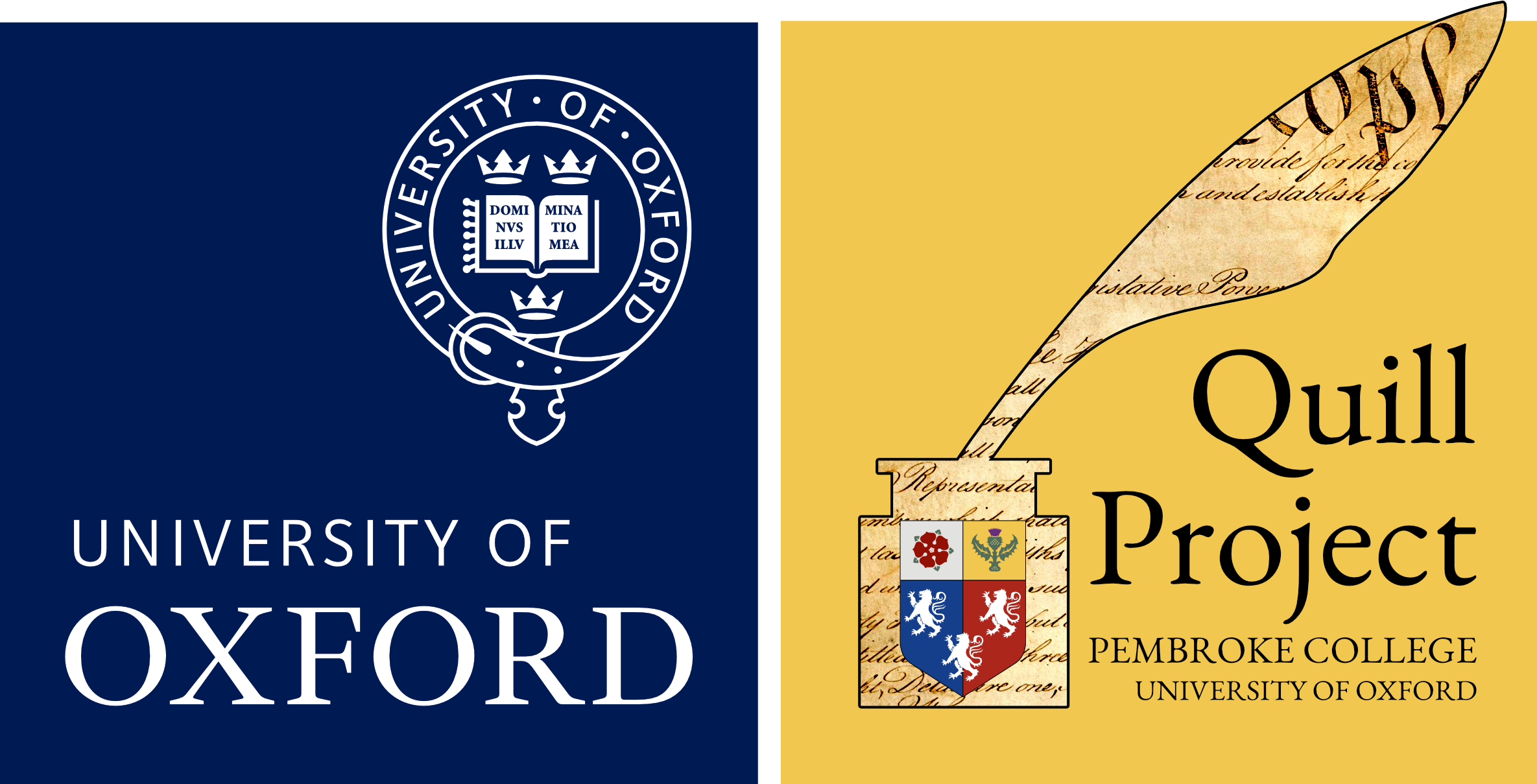Software Platform
The Quill Platform
The Quill Project blends traditional humanities approaches to the editing and presentation of text with advanced tools for analysis and commentary. One of the key resources created by the project is a database and web platform to analyse complex, formal negotiations. This platform offers a bespoke and innovative way of understanding the process of debate within legislative and other settings.
Track Changes
Most people are familiar with ‘Track Changes’ in word-processing packages and with tools to allow multiple people to edit the same document over the internet. Those working in computer science will also have used distributed source code repositories such as Git and Mercurial. These systems are different approaches to the core problem of how to represent a text being worked on by multiple authors. This issue is also at the heart of the process of legislative drafting: the outcome will be an agreed text that has been drafted by dozens or perhaps even hundreds of people.
The Quill Project’s software borrows from approaches taken by other collaborative tools but adapts them to do something different. Using the minutes of a constitutional convention, a diplomatic negotiation, a legislative body, or some similar meeting, the software creates a model of the negotiations, ‘tracking changes’ and contributions by different authors over time as the final text is constructed. The resulting model both elucidates the process of debate within a particular negotiation and allows different negotiations to be meaningfully compared.
The platform has been designed to capture the work of any negotiation where the following is true:
text documents are being discussed (e.g. formal resolutions, draft legislation, and so on)
specific proposals are made to change these texts
decisions are taken to accept or reject particular decisions
document-processing layer
To answer many of the most important questions that arise when studying such records, it is necessary to have an accurate representation of the particular context within which a given proposal was made and the context within which a particular decision was taken. It is important to bear in mind that there might be a considerable gap in time between any given proposal being introduced for debate and any definite decision being taken on its merits.
The most important task of the Quill platform is to be able to show, for any given moment in time, the state of the agreed texts under discussion:
What text had been definitely agreed?
What suggestions had been tabled for debate?
What would have been the effect of agreeing any particular suggestion at any particular moment?
A document processing layer within the software platform performs this task.
Analysis
An analysis layer allows a variety of supplementary questions to be answered, such as:
When was a particular phrase first considered?
How many times was a particular phrase voted on?
What were the alliances within the various members of a given negotiation? On how many issues did they tend to differ? How did alliances change over time?
Which members of the negotiation made the most effective interventions?
Visualizations
Just as important as these two layers is the set of visualizations that we use to present this complex information clearly. Here we face a double task — most readers are unfamiliar with the rules and conventions that govern formal debate, and must also be guided through intrinsically complicated processes: the ~ 4,500 words of the 1787 U.S. Constitution took over three months to negotiate, during which time hundreds of proposals were made and votes taken in a complicated process of drafting and re-drafting that requires more than 2,000 discrete moments to be modelled within our platform.
A formal discussion of the Quill approach is available here.


